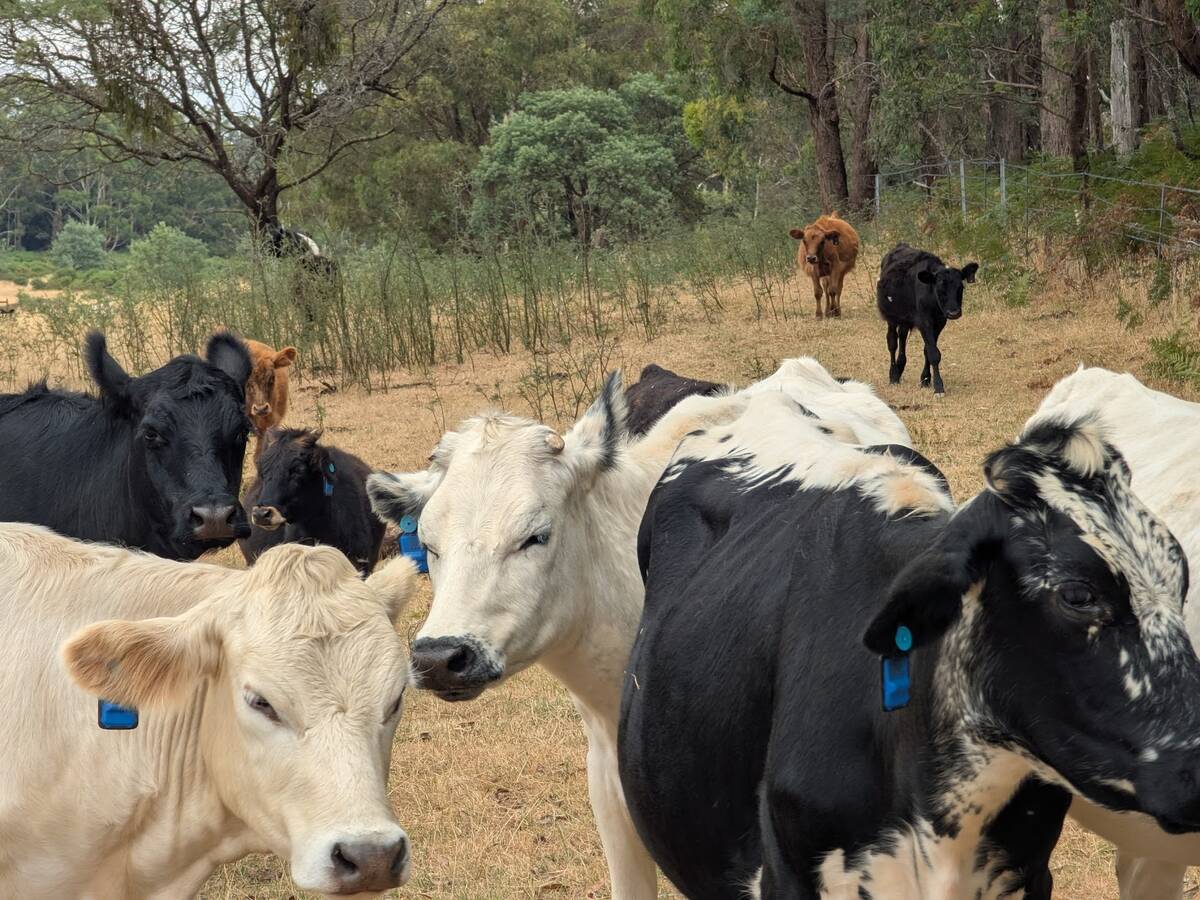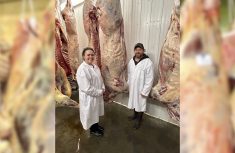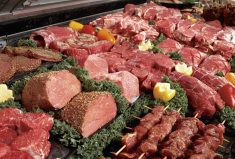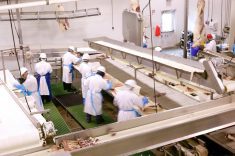When representatives from the meat industry, microbrew marketing, and feedlot sectors come together, the pieces of a new- to-Canada enterprise begin to snap into place. Almost literally.
Larry Dalton, James Bradbury and Jeff Ball combined their unique viewpoints to create a new method of branding and marketing beef, specifically building small processing plants on local land, near the cattle, the customer and the end-user.
Expanding the idea
Read Also

Australian company brings ear-tag tech to Canadian pastures
With Smart Paddock, beef farmers and ranchers can track their cattle through GPS technology
As the marketing representative of what became Janus Solutions, strategic partner James Bradbury loved the initial idea but suggested they go even further.
“Why not make this not only for us but for anyone who wants to do this?” he says. “What about a closed-loop ecosystem with a plant in the middle of this supply and value chain we link with the customer?”
A closed-loop agricultural system is one that eliminates waste by, for example, using manure to fertilize the soil.
The trio began by investigating similar ventures around the world. In South Africa, Neal de Beer, managing director at Innovative Process Solutions, was already design- ing facilities like what they’d envisioned.
“This isn’t a new idea,” Bradbury says. “Similar units are up and running in other parts of the world. In Finland, they design them to harvest reindeer. They’re easily broken down and moved from site to site following the travelling animals.”
Using their newly gathered information, the group designs their facilities as part modular and part traditional stick builds. Modular containers like Lego pieces are added to the unit’s core, making them expandable from a harvesting point of 50 head per day to 250.
Numerous countries and businesses are intertwined as project suppliers. The Finnish company Kometos Oy provides various modular units. Titan, a Danish refrigeration business, designs freezers and refrigeration equipment easily incorporated into shipping containers. German, Hungarian and South African corporations also contribute components.
“It’s like assembling a car,” Bradbury says. “All the necessary parts aren’t found in one location. We’re getting the best possible technology and equipment from where it’s available.”
Connecting the pieces
“Building a purpose-built facility is only a part of the solution,” says Larry Dalton, Janus Solutions president. “The entire ecosystem of what happens on the farm, all the way through to someone buying a package of meat, needs to be addressed all at once and with a concerted effort.”
Their idea was to create a brand and tell a story transparently that people understood. By only including specific cattle producers, they were confident of a consistent supply.
“Success in this ecosystem is stifled by a lack of transparency among supply and value chains. Transparency and co-ordination solve many issues on either side of a processing facility,” Dalton says.
End-users such as restaurants and grocery chains show interest, eager for their own marketplace branding without suffering irregular supply and pricing. They also gravitate to the environmental and sustainability angles of a closed-loop ecosystem, which enables them to build their own version of a sustainable infrastructure.
Within this system, traceability helps provide the opportunity for unique sizes and portions. Although the current industry features larger cattle and bigger cuts of beef, many chefs want smaller but thicker cuts.
“It’s two opposing sides,” Bradbury says. “If a chef on one end of the ecosystem wants a smaller steak and is willing to pay (more) for it, instead of pricing by the kilo, this new structure brings more money when desired targets are reached. We connect the end-user with the producer. The amount, size, breed and look they want is there for as long as they desire it.”
Telling the story
Bradbury believes when a business continually advances features instead of benefits or skips the understanding of the layered brand story, they’ll run out of things to promote. Organic, natural or best practices are limited and will quickly be repeated by others. A closed ecosystem already has its own story.
“Selling meat doesn’t have to be about production features,” says Dalton. “We all need to learn how to create differentiated brands aligning with the values consumers want to get behind. Much of this comes from individual farm’s beliefs and best practices, along with consistent storytelling.”
Like the microbrewery industry, which initially struggled for a foothold before shifting their focus to the idea of a more discerning palate, Janus Solutions aims to divert their fight from what they put into their operation to the story they tell.
With limited consumer understanding of beef grading differences, sustainability and regenerative agriculture, Janus wants to address the core of the matter.
“We first need to be clear in telling our story,” Bradbury says. “Put labels on it, make it a brand consumers want like any other industry. Stop selling meat as if it were gasoline with three grades differing by pennies a litre from one retailer to another. We have a responsibility as an industry to do better and bring the brand to the consumer.”
Janus Solutions has gathered dedicated partners and is arranging both federal and provincial funding. Their first project’s application is currently being drafted. Subsequent projects are in variable stages throughout the three western provinces.
Bradbury says many people are watching from the sidelines to see how this venture transpires, so the group is focused on creating a working unit soon to prove their capabilities.
“This is a Canadian-made solution meant to address a widespread meat industry concern around consolidation and the need for more control for producers and greater choices for consumers,” Dalton says. “It’s particularly important as food prices continue to climb, and consumers demand more for their dollar.”
















